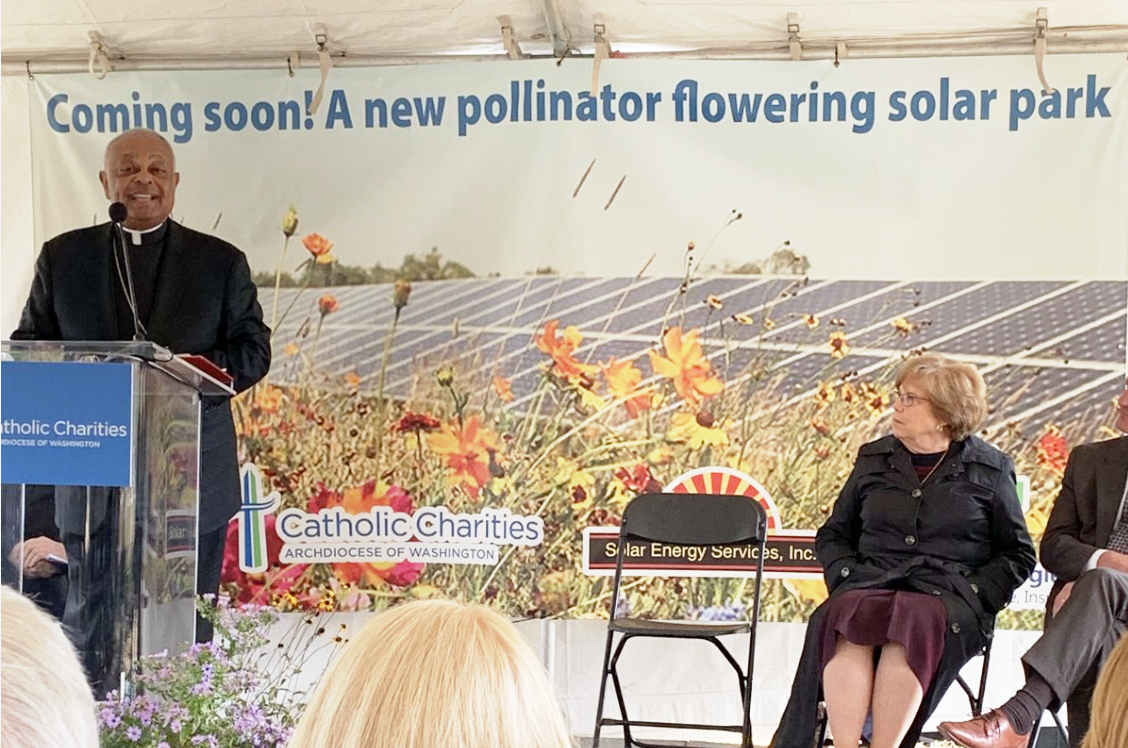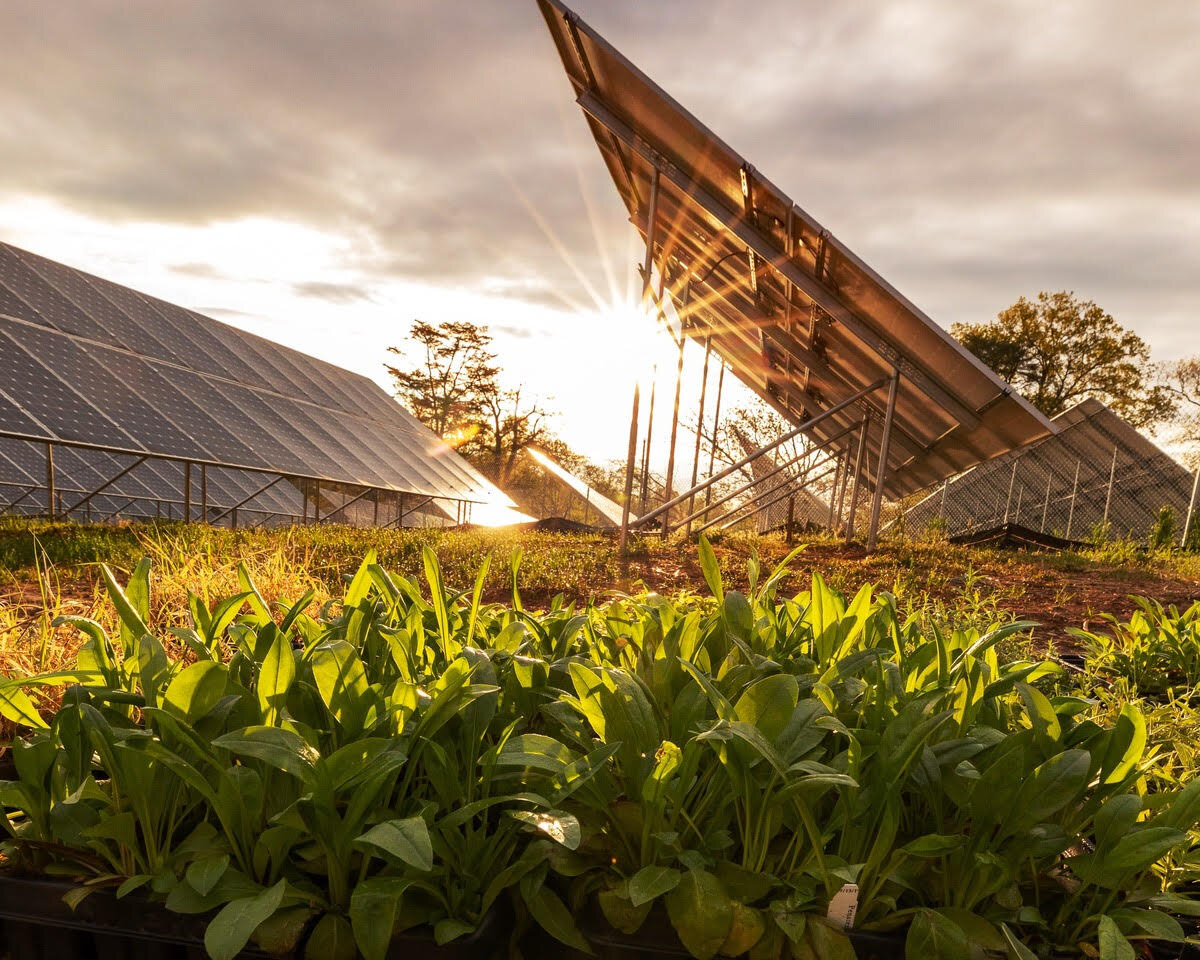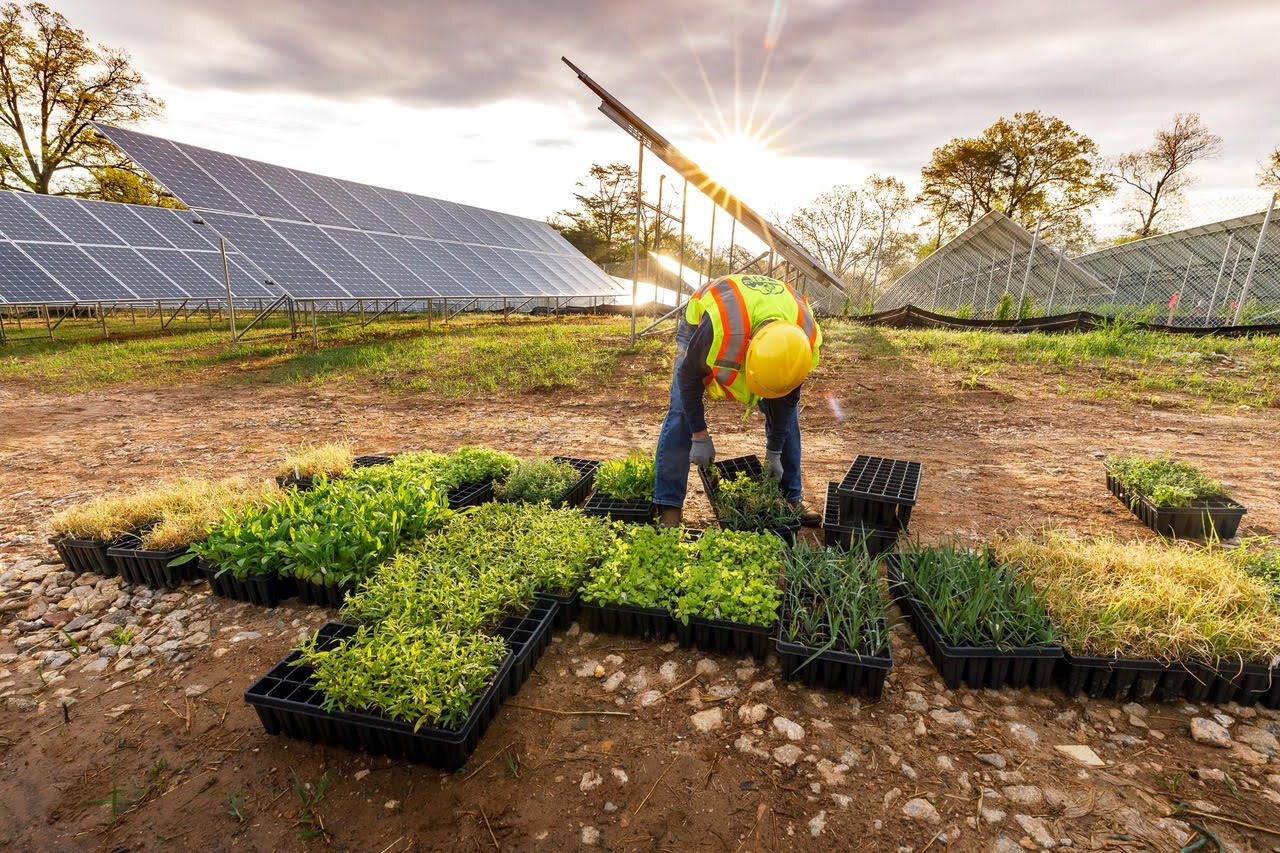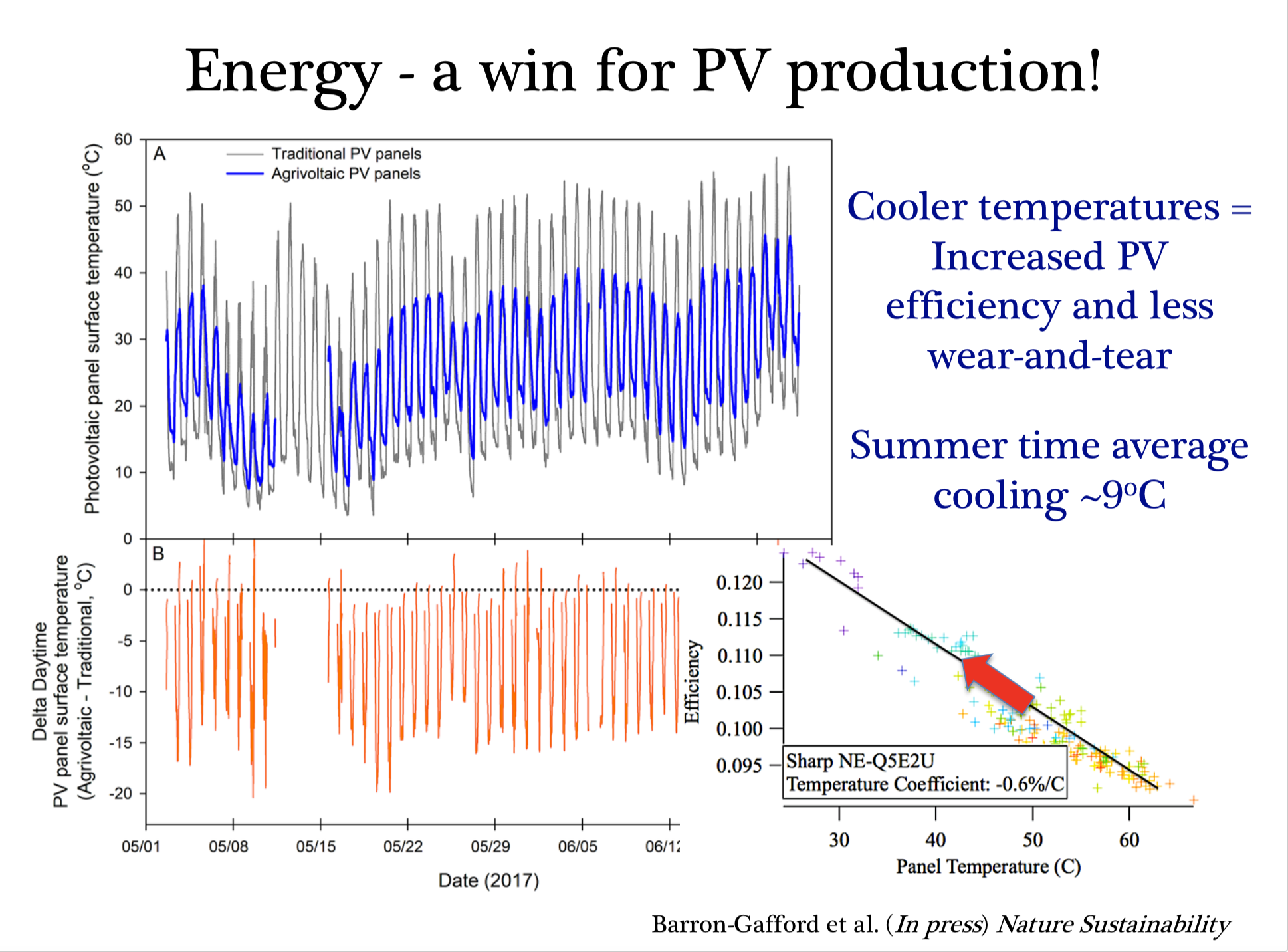Solar Pollinator Begins to Grow
Our recently installed solar project in partnership with Catholic Charities of the Archdiocese of Washington features an added benefit for the surrounding area - a flowering solar park. The project will include a five-acre pollinator meadow to support pollinator populations, such as bees and butterflies. About 650,000 pollinator and nectar-bearing flowering plants will be at the base of the solar panel array. By reinvigorating pollinator habitats through projects such as this, researchers hope to curb the decline of vital insect species and help bolster the agricultural industry.
“Making productive use of the land under and around ground-mounted solar farms is a once-in-a-generation opportunity to create new acres of habitat for the butterflies, birds and nature that gives us a sense of peace,” said Rob Davis, director for the Center for Pollinators in Energy. “With plans for a beautiful new flowering solar park, Catholic Charities of the Archdiocese of Washington are helping to grow this important national trend of pollinator-friendly solar.”
Supplementing the pollinator-friendly seed mix that went in several weeks ago, Ernst Pollinator Service planted several thousand landscape plugs at the Archdiocese of Washington DC solar park yesterday.
In coordination with the NREL InSPIRE study, our goal is to take another series of photos at 3/6/12/15/18 months showing the progress. The semi-mature landscape plugs supplement the work for the cover crop and pollinator-friendly seed mix that is already in place on the project.
All of the plants will grow in over the next two seasons to establish a flowering meadow under and around the panels — providing aesthetic beauty, a way station for migrating monarchs, and helping mitigate the negative effect of heat on solar PV generation.
Many thanks to Rob Davis, Director of the Center for Pollinators in Energy at Fresh Energy
Learn more about NREL’s InSPIRE project
Learn more about Catholic Charities of the Archdiocese of Washington’s solar project




